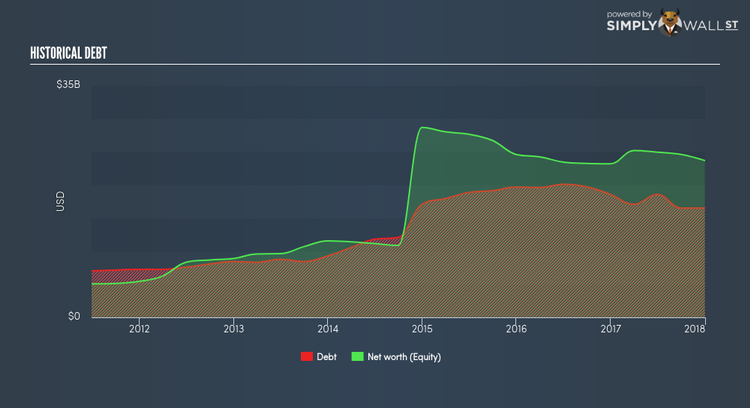What Investors Should Know About Williams Partners LP.’s (NYSE:WPZ) Financial Strength

Investors pursuing a solid, dependable stock investment can often be led to Williams Partners LP. (NYSE:WPZ), a large-cap worth US$32.77B. Market participants who are conscious of risk tend to search for large firms, attracted by the prospect of varied revenue sources and strong returns on capital. But, the key to extending previous success is in the health of the company’s financials. This article will examine Williams Partners’s financial liquidity and debt levels to get an idea of whether the company can deal with cyclical downturns and maintain funds to accommodate strategic spending for future growth. Note that this information is centred entirely on financial health and is a high-level overview, so I encourage you to look further into WPZ here. Check out our latest analysis for Williams Partners
How much cash does WPZ generate through its operations?
WPZ’s debt levels have fallen from US$18.56B to US$16.50B over the last 12 months , which comprises of short- and long-term debt. With this debt payback, WPZ currently has US$881.00M remaining in cash and short-term investments for investing into the business. On top of this, WPZ has generated US$2.84B in operating cash flow over the same time period, resulting in an operating cash to total debt ratio of 17.22%, meaning that WPZ’s current level of operating cash is not high enough to cover debt. This ratio can also be interpreted as a measure of efficiency as an alternative to return on assets. In WPZ’s case, it is able to generate 0.17x cash from its debt capital.
Can WPZ pay its short-term liabilities?
Looking at WPZ’s most recent US$2.45B liabilities, it appears that the company has not been able to meet these commitments with a current assets level of US$2.14B, leading to a 0.87x current account ratio. which is under the appropriate industry ratio of 3x.
Does WPZ face the risk of succumbing to its debt-load?
WPZ is a relatively highly levered company with a debt-to-equity of 69.64%. This isn’t surprising for large-caps, as equity can often be more expensive to issue than debt, plus interest payments are tax deductible. Consequently, larger-cap organisations tend to enjoy lower cost of capital as a result of easily attained financing, providing an advantage over smaller companies. We can check to see whether WPZ is able to meet its debt obligations by looking at the net interest coverage ratio. Net interest should be covered by earnings before interest and tax (EBIT) by at least three times to be safe. In WPZ’s case, the ratio of 3.28x suggests that interest is appropriately covered. High interest coverage serves as an indication of the safety of a company, which highlights why many large organisations like WPZ are considered a risk-averse investment.
Next Steps:
WPZ’s debt and cash flow levels indicate room for improvement. Its cash flow coverage of less than a quarter of debt means that operating efficiency could be an issue. Furthermore, its lack of liquidity raises questions over current asset management practices for the large-cap. This is only a rough assessment of financial health, and I’m sure WPZ has company-specific issues impacting its capital structure decisions. I suggest you continue to research Williams Partners to get a better picture of the stock by looking at:
Future Outlook: What are well-informed industry analysts predicting for WPZ’s future growth? Take a look at our free research report of analyst consensus for WPZ’s outlook.
Valuation: What is WPZ worth today? Is the stock undervalued, even when its growth outlook is factored into its intrinsic value? The intrinsic value infographic in our free research report helps visualize whether WPZ is currently mispriced by the market.
Other High-Performing Stocks: Are there other stocks that provide better prospects with proven track records? Explore our free list of these great stocks here.
To help readers see pass the short term volatility of the financial market, we aim to bring you a long-term focused research analysis purely driven by fundamental data. Note that our analysis does not factor in the latest price sensitive company announcements.
The author is an independent contributor and at the time of publication had no position in the stocks mentioned.

